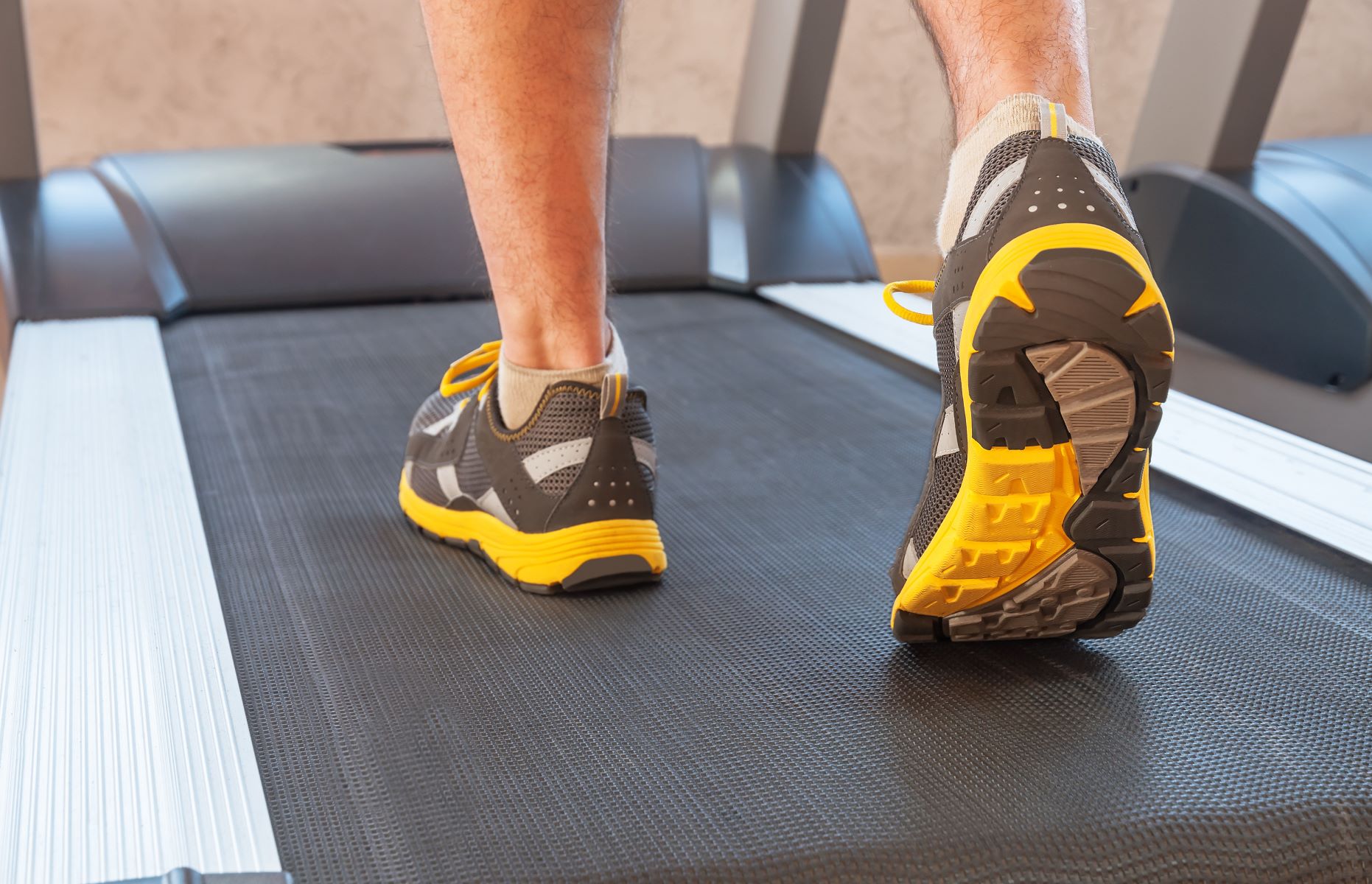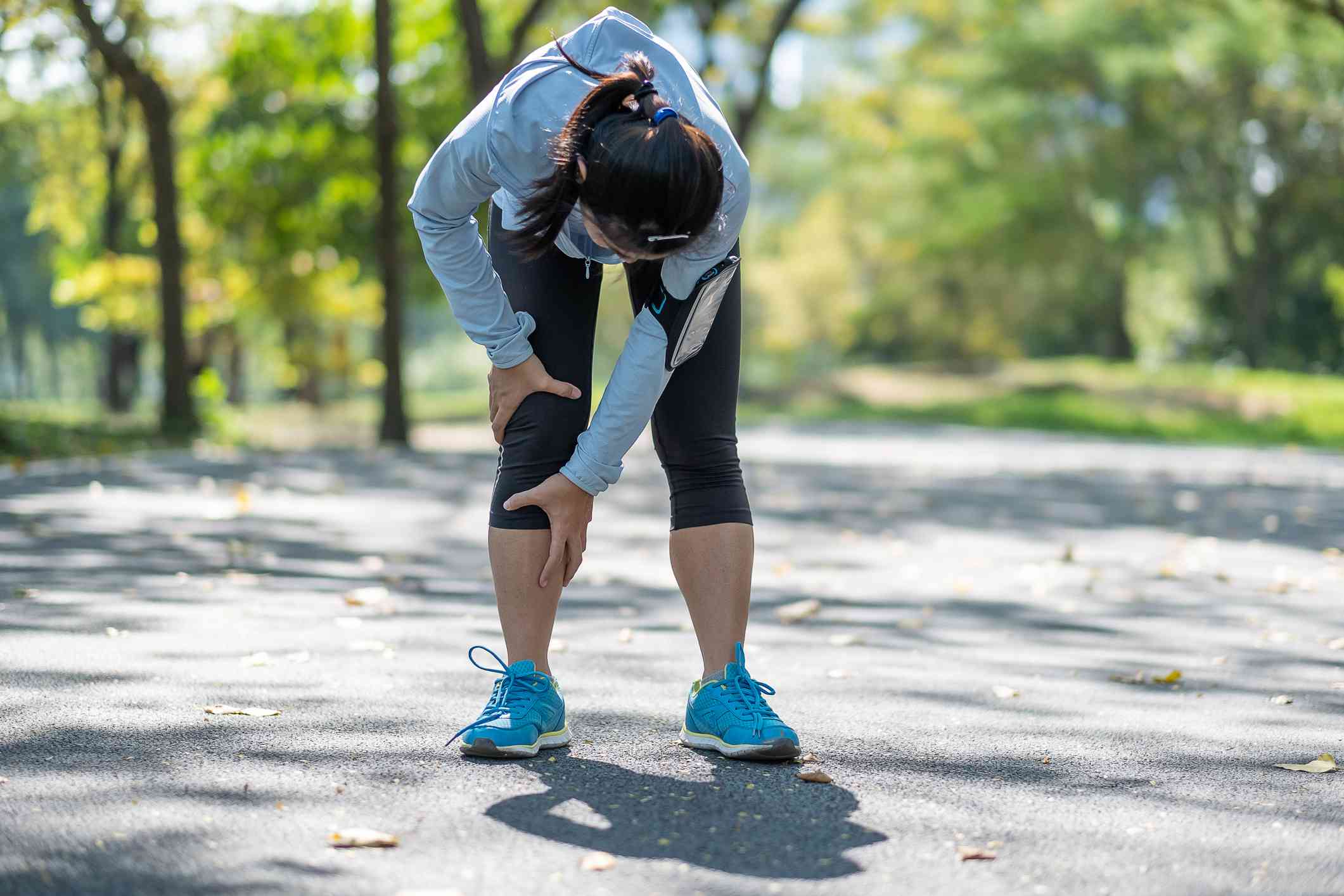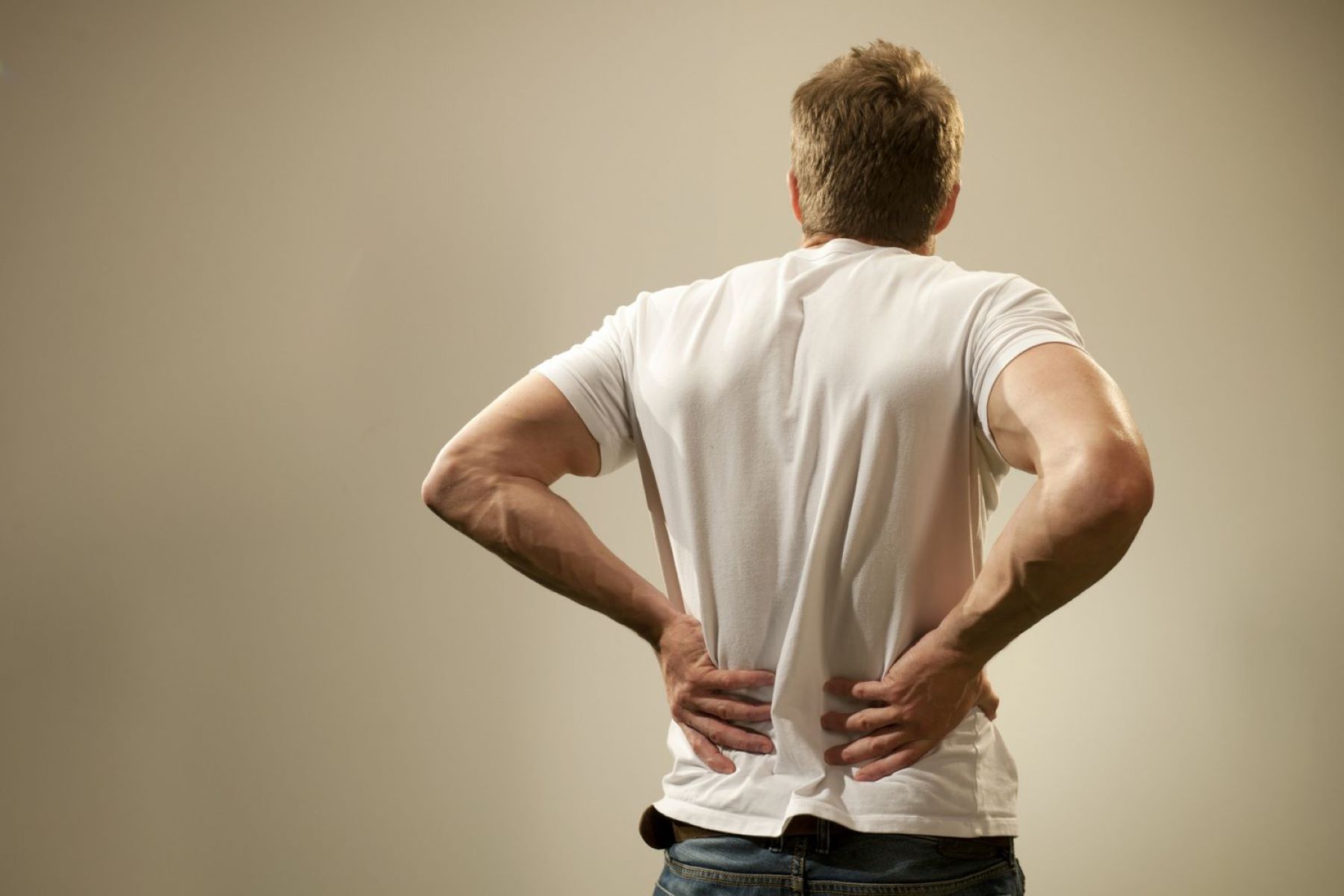

Featured
Why Do Muscles Hurt After Exercise
Modified: January 2, 2024
Learn why your muscles hurt after exercise and discover ways to alleviate the pain. Stay tuned for our featured tips and tricks.
Introduction
Have you ever wondered why your muscles hurt after a vigorous workout? Whether you’re a seasoned athlete or just starting on your fitness journey, post-exercise muscle pain is a common phenomenon that can leave you feeling sore and uncomfortable. Understanding the causes behind this discomfort can help you better navigate your fitness routine and optimize your recovery.
Muscle soreness after exercise, also known as delayed onset muscle soreness (DOMS), is a result of the stress and strain placed on your muscles during physical activity. It is characterized by tightness, stiffness, and aching sensations that can last for hours or even days after your workout.
In this article, we will delve into the science behind muscle pain after exercise and explore various factors that contribute to this discomfort. From the role of inflammation and muscle damage to the effects of muscle fatigue and lactic acid buildup, we will shed light on why your muscles may be experiencing this post-workout ache.
Furthermore, we will offer practical tips and strategies to alleviate muscle pain and speed up the recovery process. From incorporating stretching and warm-up exercises to implementing proper nutrition and hydration techniques, we will provide insight into how you can minimize discomfort and ensure a smooth recovery.
So, whether you’re an avid gym-goer or someone who enjoys occasional physical activity, understanding the science behind muscle pain after exercise and implementing effective recovery strategies will not only enhance your performance but also promote overall well-being.
What Causes Muscle Pain After Exercise?
Have you ever experienced that burning, achy sensation in your muscles the day or two following a challenging workout? This common phenomenon, known as delayed onset muscle soreness (DOMS), is one of the primary causes of muscle pain after exercise.
DOMS occurs due to microscopic damage to muscle fibers caused by exercising at high intensity or with unfamiliar movements. This damage triggers an inflammatory response in the body, leading to the sensations of pain and stiffness.
Inflammation itself plays a crucial role in the muscle healing process. When exercise-induced damage occurs, the body releases inflammatory cells and substances to initiate the repair and rebuilding of the affected muscles. While this process is necessary for muscle growth and adaptation, it can also result in discomfort and pain.
Furthermore, muscle fatigue is another contributing factor to post-exercise muscle pain. During intense exercise, the muscles undergo an energy-demanding process that results in the production of lactic acid. Contrary to popular belief, however, lactic acid buildup is not the primary cause of muscle soreness. Rather, it is a byproduct of energy metabolism. Nonetheless, the accumulation of lactic acid can contribute to fatigue and muscle discomfort.
Additionally, the eccentric muscle contractions involved in certain types of exercises, such as downhill running or exercises that involve eccentric muscle loading, can lead to greater muscle damage and subsequent soreness compared to concentric contractions, which involve muscle shortening.
Understanding these factors can help you embrace muscle soreness as a sign of progress, as it indicates that you are challenging your muscles and promoting growth. However, excessive muscle damage and prolonged pain can hinder your performance and impede your recovery. Therefore, it is crucial to learn effective strategies to alleviate muscle pain and facilitate the healing process.
In the following sections, we will explore various ways to relieve muscle pain after exercise, enabling you to optimize your recovery and get back on track with your fitness goals.
Delayed Onset Muscle Soreness (DOMS)
Delayed onset muscle soreness (DOMS) is a common condition that occurs after intense or unfamiliar exercise. It typically peaks within 24 to 72 hours after a workout and can manifest as muscle tenderness, stiffness, reduced range of motion, and soreness.
The exact mechanism behind DOMS is still not fully understood, but it is believed to involve a combination of factors. One theory suggests that DOMS is caused by microscopic damage to the muscle fibers and the surrounding connective tissue. This damage triggers an inflammatory response, leading to the characteristic pain and discomfort.
Additionally, DOMS is more likely to occur when muscles are stretched or lengthened during exercise, such as during downhill running or eccentric muscle contractions. These types of movements can cause more damage to the muscle fibers, resulting in increased soreness.
It’s important to note that DOMS is different from acute muscle soreness, which is the immediate pain and fatigue experienced during or shortly after exercise. Acute muscle soreness typically resolves within a day or two, whereas DOMS peaks after the workout and can take several days to subside.
While DOMS can be uncomfortable, it is generally considered a normal part of the muscle repair and adaptation process. In fact, experiencing DOMS is an indication that you have challenged your muscles and stimulated growth. However, excessive muscle damage and prolonged soreness can hinder your performance and impede your training progress.
To manage DOMS and promote recovery, there are several strategies you can implement. These include:
- Gradually increasing exercise intensity and volume to allow the muscles to adapt
- Incorporating regular rest days to give your muscles time to recover
- Performing light aerobic exercise to increase blood flow and promote healing
- Using ice or cold packs to reduce inflammation and alleviate pain
- Engaging in gentle stretching and foam rolling to improve muscle flexibility and relieve tightness
- Ensuring proper nutrition and hydration to support muscle repair and growth
By implementing these strategies, you can minimize the discomfort associated with DOMS and optimize your recovery, allowing you to continue progressing towards your fitness goals.
Inflammation and Muscle Damage
Inflammation and muscle damage are closely linked when it comes to post-exercise muscle pain. When you engage in intense or unfamiliar exercise, your muscles are subjected to stress and strain, resulting in microscopic damage to the muscle fibers and connective tissue.
This damage triggers an inflammatory response in the body as a protective mechanism. Inflammatory cells, such as white blood cells, are recruited to the damaged area, and chemical mediators are released. These mediators, including cytokines and prostaglandins, promote blood flow to the injured muscles and initiate the healing process.
While inflammation is a natural response to muscle damage and necessary for the repair and rebuilding of the muscles, it can also contribute to pain and discomfort. The inflammatory response can lead to increased blood flow and fluid accumulation in the affected area, causing swelling and stiffness.
Furthermore, the release of chemical mediators can stimulate nerve endings, leading to the perception of pain. This pain response serves as a warning signal to protect the damaged muscles and prevent further injury. However, it can also result in significant discomfort and hinder your ability to perform daily activities.
To mitigate the effects of inflammation and promote muscle recovery, various strategies can be employed. These include:
- Applying ice packs or cold compresses to the affected muscles to reduce swelling and inflammation
- Using nonsteroidal anti-inflammatory drugs (NSAIDs), such as ibuprofen, under the guidance of a healthcare professional, to alleviate pain and inflammation
- Incorporating gentle stretching exercises to improve blood flow and restore flexibility to the muscles
- Engaging in low-impact activities, such as swimming or cycling, to promote circulation and facilitate recovery
- Eating a balanced diet rich in anti-inflammatory foods, such as fruits, vegetables, and omega-3 fatty acids, to support the healing process
By implementing these strategies, you can help manage inflammation and minimize muscle pain, allowing for a smoother recovery process and improved performance in future workouts.
Muscle Fatigue and Lactic Acid Buildup
Muscle fatigue and lactic acid buildup are two factors that can contribute to muscle pain after exercise. During intense physical activity, your muscles undergo a series of contractions that require energy. This energy is produced through a process called glycolysis, which generates adenosine triphosphate (ATP) to power muscle contractions.
As your muscles work hard, they start producing lactic acid as a byproduct of this glycolytic process. Contrary to popular belief, lactic acid buildup itself is not the primary cause of muscle soreness. Instead, it is a result of the muscles working at a high intensity and needing energy quickly. However, elevated levels of lactic acid can contribute to muscle fatigue and discomfort.
When lactic acid accumulates in the muscles, it can interfere with their ability to contract and relax efficiently. This can lead to a sensation of muscle weakness and fatigue. Additionally, it can stimulate nerve endings, leading to a burning or cramping sensation within the muscles.
In order to prevent excessive muscle fatigue and reduce lactic acid buildup during exercise, it is important to implement proper training strategies. Gradually increasing your exercise intensity and volume over time allows your muscles to adapt and become more efficient at producing and clearing lactic acid. This is known as progressive overload and can help minimize muscle pain and fatigue.
Furthermore, incorporating appropriate rest periods between intense workouts gives your muscles time to recover and restore their energy stores. This prevents overworked muscles from succumbing to excessive fatigue and reduces the likelihood of excessive lactic acid buildup.
In addition to proper training techniques, there are other strategies that can help reduce muscle fatigue and lactic acid buildup:
- Stay hydrated throughout your workout to ensure optimal muscle function and efficient waste removal.
- Incorporate interval training or high-intensity interval training (HIIT) into your routine, as these methods have been shown to improve muscle endurance and increase the ability to clear lactate from the muscles.
- Engage in active recovery activities, such as gentle cycling or walking, which can help flush out lactic acid and improve blood flow to the muscles.
- Include proper warm-up and cool-down exercises in your routine to prepare your muscles for exercise and facilitate recovery afterwards.
By implementing these strategies, you can minimize muscle fatigue and reduce the buildup of lactic acid during exercise, leading to decreased post-workout muscle pain and improved performance.
Ways to Alleviate Muscle Pain After Exercise
Experiencing muscle pain after exercise is not uncommon, but there are several effective strategies you can implement to alleviate discomfort and promote faster recovery. By incorporating these techniques into your post-workout routine, you can ensure that your muscles bounce back quickly and continue to progress towards your fitness goals.
1. Stretching and Warm-Up Exercises:
Prioritize stretching the muscles you worked during your workout to reduce muscle tightness and enhance flexibility. Dynamic warm-up exercises, such as jogging or jumping jacks, can also prepare your muscles for exercise and help prevent muscle strains and injuries.
2. Cooling Down After Exercise:
Take the time to cool down properly after your workout. This can include gentle movements and stretches that gradually lower your heart rate and bring your body back to a resting state. Cooling down can help reduce post-exercise muscle soreness and prevent light-headedness or dizziness.
3. Proper Nutrition and Hydration:
Providing your body with the necessary nutrients and staying adequately hydrated is crucial for muscle recovery. Include a post-workout meal or snack that contains a balance of carbohydrates and protein to replenish glycogen stores and aid in muscle repair. Hydrate throughout the day to support optimal muscle function and facilitate waste removal.
4. Rest and Recovery:
Allow your muscles time to recover and rebuild before engaging in intense exercise again. Incorporating rest days into your training program is essential for preventing overtraining and reducing the risk of injury. During rest days, focus on low-impact activities or active recovery exercises to promote blood flow and bring nutrients to your muscles.
5. Use of Ice or Heat:
If you experience acute muscle soreness or inflammation after a particularly intense workout, you can use ice or heat therapy to alleviate pain. Applying an ice pack to the affected area can help reduce inflammation and numb the area, while using a heating pad or warm towel can increase blood flow and promote muscle relaxation.
6. Massage and Foam Rolling:
Massaging your muscles or using a foam roller can help reduce muscle tension and alleviate post-exercise soreness. These techniques help increase blood flow, break up scar tissue, and release muscle knots or trigger points. Make sure to use proper techniques and apply appropriate pressure to avoid injury.
By incorporating these strategies into your routine, you can effectively alleviate muscle pain and promote faster recovery after exercise. Keep in mind that everyone’s body is different, so it may take some trial and error to find the methods that work best for you. Listen to your body, give it the care it needs, and you’ll be on your way to a more comfortable and successful fitness journey.
Stretching and Warm-Up Exercises
Stretching and warm-up exercises are vital components of any workout routine as they help prepare your muscles for exercise, improve flexibility, and reduce the risk of injury. Incorporating these activities into your pre-workout routine can significantly alleviate muscle pain after exercise and enhance overall performance.
1. Static Stretching:
Static stretching involves holding a stretch for a prolonged period, typically between 15 to 30 seconds. This type of stretching helps improve muscle flexibility by elongating the muscles and increasing their range of motion. Focus on stretching the major muscle groups you will be working during your workout, paying attention to areas that tend to be tight or prone to injury.
2. Dynamic Warm-Up:
A dynamic warm-up involves performing movements that mimic the exercise you will be doing, but at a lower intensity. It helps increase blood flow to the muscles, improves mobility, and activates the muscles you will be using during your workout. Dynamic warm-up exercises can include arm circles, leg swings, walking lunges, and jumping jacks, among others.
3. Foam Rolling:
Incorporating foam rolling, also known as self-myofascial release, into your warm-up routine can help alleviate muscle tension and improve flexibility. Using a foam roller, apply gentle pressure to targeted muscle groups to release any adhesions or knots in the muscle tissue. This can increase blood flow, improve range of motion, and reduce the likelihood of muscle strain or injury.
4. Proprioceptive Neuromuscular Facilitation (PNF) Stretching:
PNF stretching involves contracting and relaxing specific muscle groups to improve flexibility and increase muscle extensibility. This technique is typically done with a partner who applies gentle resistance during the stretch. PNF stretching is an effective method for lengthening muscles and improving joint mobility.
5. Targeted Stretches:
In addition to general stretching, it’s essential to include targeted stretches for specific muscle groups or areas of tightness. For instance, if you often experience tightness in your hips or hamstrings, focus on stretches that specifically address those areas. By addressing individual muscle imbalances or tightness, you can reduce the likelihood of muscle pain during and after exercise.
Remember, stretching should be done after a proper warm-up, when your muscles are warmed up and more pliable. Avoid stretching cold muscles, as it can increase the risk of injury. Additionally, listen to your body and avoid pushing past your limits during stretching to prevent overstretching or strain.
By incorporating stretching and warm-up exercises into your routine, you can improve muscle flexibility, decrease muscle tension, and reduce the chances of post-workout muscle pain. Take the time to properly prepare your body for exercise, and you’ll reap the benefits of a more effective and enjoyable workout.
Cooling Down After Exercise
After an intense workout, it’s important to take the time to cool down properly. Cooling down allows your body to gradually transition from higher intensity exercise to a state of rest. This helps prevent dizziness, fainting, and muscle soreness while promoting the recovery process.
Here are some key benefits of incorporating a proper cool down after exercise:
- Gradually Lower Heart Rate: During exercise, your heart rate and blood flow increase to meet the demands of your muscles. Cooling down with light aerobic exercise helps gradually reduce your heart rate back to its resting state. This gradual decrease in heart rate helps prevent sudden changes that could strain your cardiovascular system.
- Prevent Blood Pooling: Cooling down helps prevent blood from pooling in your extremities, which can occur after intense exercise. By continuing to move and engage in light exercise, you promote blood circulation and keep it flowing back to your heart. This helps prevent dizziness and fainting.
- Remove Metabolic Waste: Intense exercise results in the accumulation of metabolic waste products, such as lactate, in your muscles. Cooling down helps facilitate the removal of these waste products by promoting blood flow. This can help minimize muscle soreness and speed up recovery.
- Reduced Post-Exercise Muscle Soreness: Cooling down with gentle stretches and low-intensity exercises can help reduce post-exercise muscle soreness. This is because cooling down helps bring fresh blood and nutrients to your muscles, which aids in repairing and rebuilding the muscle fibers.
- Mental Relaxation and Transition: The cool-down period provides a mental transition from the intense focus and effort of your workout to a state of relaxation. It allows you to mentally wind down, reflect on your performance, and shift your focus to the recovery and rejuvenation of your body.
When implementing a cool down routine, aim for at least 5 to 10 minutes of low-intensity aerobic exercise, such as jogging, walking, or cycling. This helps keep your muscles warm and promotes blood flow. Follow it with static stretches, focusing on the major muscle groups you worked during your workout. Hold each stretch for 15 to 30 seconds, without bouncing or forcing the stretch.
Remember to listen to your body during the cool down period. If you feel dizzy, lightheaded, or experience any discomfort, it’s important to take additional rest, lie down, or seek medical attention if necessary.
By incorporating a proper cool down routine into your exercise regimen, you can optimize your recovery, reduce muscle soreness, and promote overall well-being.
Proper Nutrition and Hydration
Proper nutrition and hydration play a crucial role in alleviating muscle pain and promoting optimal recovery after exercise. When you provide your body with the necessary nutrients and fluids, you support muscle repair, replenish energy stores, and enhance overall performance.
Here are some key considerations for proper nutrition and hydration:
- Pre-Workout Fuel: Consuming a balanced meal or snack before your workout provides your body with the necessary energy to perform at its best. Include a combination of carbohydrates, such as whole grains or fruits, along with a source of protein, like lean meat or plant-based alternatives. This combination helps sustain energy levels and supports muscle repair.
- During-Workout Hydration: Staying adequately hydrated during your workout is essential for optimal muscle function and performance. Aim to drink water or a sports drink throughout your exercise session to replace fluids lost through sweating. Monitor your urine color as a general indicator of hydration status – a pale yellow color is ideal.
- Post-Workout Recovery: After exercise, it’s crucial to replenish your body’s glycogen stores and provide protein for muscle repair. Aim to consume a post-workout meal or snack within 30 to 60 minutes after your workout. Include carbohydrates, such as grains or starchy vegetables, along with a lean protein source, like chicken or beans.
- Muscle-Building Protein: Protein is essential for muscle repair and growth. Include protein-rich foods in your diet, such as lean meats, fish, eggs, dairy products, and plant-based protein sources like beans and tofu. Consuming an adequate amount of protein throughout the day helps support muscle recovery and adaptation.
- Essential Nutrients: Ensure you’re getting a well-balanced diet that provides all the necessary vitamins and minerals. These nutrients support various bodily functions, including muscle function, tissue repair, and immune system health. Include a variety of colorful fruits and vegetables, whole grains, healthy fats, and lean proteins to ensure you’re meeting your nutritional needs.
- Fluid Intake: Hydration is crucial for muscle function and overall well-being. Aim to drink water consistently throughout the day, not just during exercise. Pay attention to your body’s thirst cues and ensure you’re drinking enough water to prevent dehydration. Additionally, if you engage in prolonged or intense exercise, consider incorporating electrolyte-rich sports drinks to replenish electrolytes lost through sweating.
Remember, everyone’s nutritional needs may vary based on factors such as body weight, activity level, and individual goals. It’s essential to listen to your body, experiment with different strategies, and consult with a registered dietitian or healthcare professional for personalized recommendations.
By prioritizing proper nutrition and hydration, you provide your body with the fuel it needs to recover effectively, minimize post-exercise muscle pain, and optimize your overall performance.
Rest and Recovery
Rest and recovery are integral components of a well-rounded exercise routine. While pushing yourself during workouts is important for progress, giving your body enough time to rest and recover is equally crucial. Adequate rest allows your muscles to repair, rebuild, and adapt, which can help alleviate muscle pain and enhance overall performance.
Here are some key factors to consider for optimal rest and recovery:
- Rest Days: Incorporate rest days into your training program to give your muscles time to recover. Rest days are essential for preventing overuse injuries, reducing muscle fatigue, and allowing your body to replenish energy stores. During rest days, engage in light activities or active recovery exercises to promote blood circulation and facilitate muscle repair.
- Sleep: Quality sleep is essential for muscle recovery and overall well-being. During sleep, your body releases growth hormones that aid in the repair and regeneration of tissues. Aim for 7-9 hours of uninterrupted sleep per night to optimize your rest and recovery. Create a bedtime routine that promotes relaxation, such as avoiding electronic devices and practicing relaxation techniques like deep breathing or meditation.
- Listen to Your Body: Pay attention to your body’s signals and adjust your training accordingly. If you’re feeling excessively fatigued or experiencing persistent muscle pain, it may be a sign that you need more rest. Don’t hesitate to take additional rest days or modify your exercise intensity to allow for proper recovery.
- Active Recovery: Engaging in low-intensity activities like walking, swimming, or yoga during rest days can promote blood circulation, reduce muscle soreness, and enhance recovery. Active recovery helps flush out metabolic waste products, improve joint mobility, and maintain overall fitness without placing excessive stress on your muscles.
- Massage or Bodywork: Incorporating massage or other bodywork techniques into your rest and recovery routine can help relax tense muscles, improve circulation, and reduce muscle pain. Consider seeking professional massages or using self-massage tools like foam rollers or massage balls to target specific areas of tightness or discomfort.
- Mind-Body Practices: Practices like yoga, tai chi, and meditation can not only promote relaxation and stress reduction but also contribute to muscle recovery. These activities help activate the parasympathetic nervous system, which is responsible for rest and digest functions, allowing your body to enter a state of deeper relaxation and recovery.
Remember, rest and recovery are individualized processes, and what works for one person may not work for another. It’s essential to listen to your body, prioritize self-care, and adjust your routine accordingly. By giving your body the time and resources it needs to rest and recover, you can minimize muscle pain, enhance performance, and optimize your fitness journey.
Conclusion
Muscle pain after exercise is a common experience for anyone who engages in physical activity. Understanding the factors that contribute to this pain and implementing effective strategies for alleviating discomfort and promoting recovery is key to maintaining a consistent exercise routine and achieving fitness goals.
Delayed onset muscle soreness (DOMS), inflammation, muscle fatigue, and lactic acid buildup are all factors that can contribute to post-exercise muscle pain. DOMS, characterized by muscle tenderness and stiffness, is a result of microscopic damage to muscle fibers. Inflammation and muscle damage, although necessary for the healing process, can lead to pain and swelling. Muscle fatigue and lactic acid buildup can cause muscle weakness and discomfort.
Fortunately, there are several ways to alleviate muscle pain after exercise. Incorporating stretching and warm-up exercises into your routine can improve flexibility and prepare your muscles for the demands of exercise. Cooling down after workouts helps gradually lower your heart rate and prevent blood pooling. Proper nutrition and hydration support muscle repair, replenish energy stores, and facilitate recovery. Rest days and sufficient sleep allow your muscles to recover and adapt. Active recovery activities, massage, and mind-body practices can also aid in alleviating muscle pain and promoting relaxation.
It’s important to remember that everyone’s body is different, and finding the strategies that work best for you may require some experimentation and fine-tuning. Listen to your body’s signals, pay attention to your own limitations, and consult with healthcare professionals or trainers as needed to ensure you’re taking the right approach to alleviate muscle pain and support recovery.
By implementing these strategies and prioritizing rest, recovery, and self-care, you can optimize your post-exercise experience, reduce muscle pain, and enhance your overall fitness and well-being.









